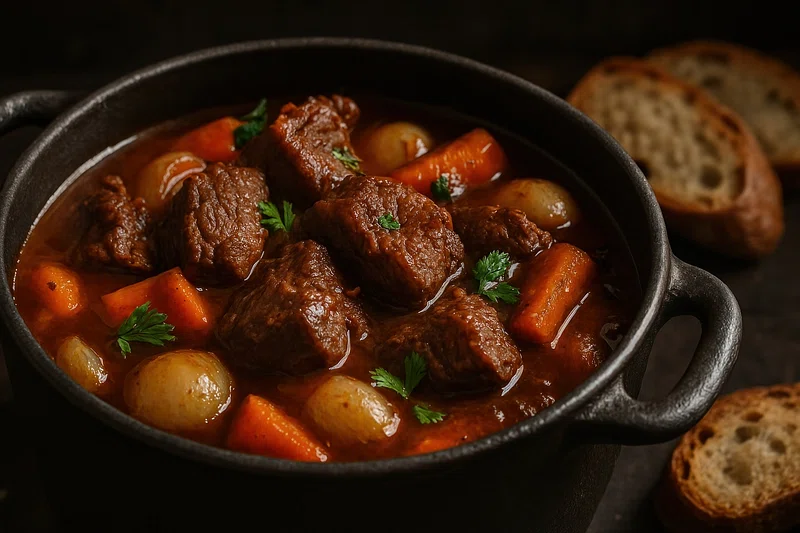Gravy and stew are both warm, comforting dishes that are undeniably tasty. However, despite their similarities, there are significant differences that differentiate these two culinary essentials. Although they frequently utilize common ingredients such as meat, vegetables, and broth in today food recipes, their cooking techniques, textures, and roles on the plate distinguish them from one another. Recognizing these differences will enhance your culinary skills and enrich your appreciation for these traditional dishes.
PRINCIPAL DIFFERENCE
The most noticeable difference lies in the sauce-to-solid ratio. Gravy is primarily a sauce, intended to be poured over other foods like roasted meats, mashed potatoes, or biscuits. It’s typically thick and smooth, often thickened with flour, cornstarch, or other starches. The focus is on creating a rich, flavorful liquid that complements the main dish.
In comparison, stew is a comprehensive meal that includes a significant amount of solid elements, primarily meat and vegetables, cooked slowly in a flavorful liquid base. This liquid is essential, serving as a cooking medium and intensifying the tastes of the solid components. It can be seen as a wholesome and fulfilling dish made in a single pot.
HOW EACH IS PREPARED
Cooking methods also differ significantly. Gravy is often made quickly, leveraging the drippings from roasted meat or poultry. It’s a process of deglazing the pan, adding stock or broth, and then thickening the sauce to the desired consistency.
Stew necessitates an extended simmering duration. This gradual cooking method enables the meat and vegetables to achieve remarkable tenderness while harmonizing their flavors. As the stew cooks, the liquid gradually reduces, resulting in a natural thickening and a deep, enhanced flavor.
PURPOSE
Finally, consider the purpose on the plate. As mentioned earlier, gravy is a condiment, enhancing the flavor and moisture of other dishes. It adds richness and completes the meal. Stew, in contrast, is a main course, offering a complete and satisfying meal in a bowl.
In summary, although both gravy and stew provide warmth and comfort, their unique attributes distinguish their functions in today food recipes. Gravy serves as a complementary sauce, enhancing other dishes with its rich flavor and velvety texture. In contrast, stew is a robust main dish, offering a complete and fulfilling meal in a single pot.
Recognizing these distinctions enables a greater appreciation for the individual contributions each makes to the dining experience. Therefore, when you find yourself desiring a comforting meal, reflect on whether you require a generous serving of gravy or a substantial bowl of stew.
